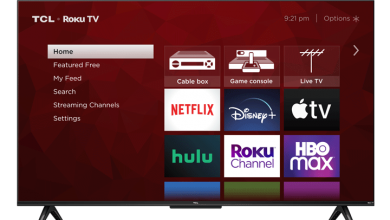Business transactions have been substantially simplified by the rapid development of the internet, which has also made communication simpler, quicker, and less expensive. Many businesses can now instantly focus on marketing a wide range of items and services through the internet. But is it safe to do so? What measures have we designed or taken to safeguard when we send sensitive data over the internet?
There are concerns, particularly with the development of illegal cyber conduct, which frequently attempts to breach systems storing confidential material or steal data as it travels from service to service all across the internet. Agreements, financial data, and health information are among the kinds of information we must protect. So, what can we do to safeguard our interests?
Contents
Tips to Send Sensitive Data Securely
Maybe you’d like to transmit a paper to a buddy that contains critical information, and you’re not sure how effective it will be in travel. You could also be interested in finding out how the receiver stops fraudulent individuals from intercepting the email on its way to the intended receiver.
Here are some pointers on how to send sensitive data securely.
Encryption

To start, make sure that perhaps the web URL for internet email – that seems to be, signing in straight to your internet company’s website without using an email client – starts with HTTPS, which indicates that the link to your email address is secured and, therefore, secure. You could even take it a step further and encrypt every message you send. PGP (Pretty Good Protection) encryption is easily obtainable, or you could just use Symantec Digital ID for Secure Email, which will provide you with an encryption method for an email response.
Wifi-Direct
Devices connected to a typical wireless network can receive data from an access point. So, what is Wi-Fi direct? Wi-Fi Direct allows devices to connect instantaneously to each other without having to go through the same process. Many links need the entry of a PIN or the scanning of a QR code for a wi-fi secured configuration for security reasons. Even with all these added processes, this type of networking has several benefits in the workplace. To exchange data across devices, Wi-Fi Direct eliminates the need for a centralized network or wireless router. Instead, one device serves as that of the entry point or hotspot when a connection is created. The WPS and WPA/WPA2 methods are then used to connect other devices to the originating device. Data can be rapidly transferred between neighboring devices once this connection is formed, even though there is no internet access accessible.
File Transfer Protocol
While transmitting personal documents through email is secure and protected, most email providers have file size limitations. If you need to send larger data files than your email provider allows, you can utilize FTP, which means File Transfer Protocol. It’s a mechanism for fast and easily transmitting massive files; however, it’s not very protected. Because FTP is famously easy to intercept and read, you’ll need additional security safeguards if you insist on sending important files this way. One option would be to use FTP in conjunction with an SSL certificate, which would offer an additional layer of protection and make file transfers more secure. This is also known as FTPS, and it establishes an encrypted channel between a server and a computer so that sensitive data can be sent swiftly and conveniently. File-sharing services are also a good option if you would like to try something different. Most are free; however, there are fees for more storage and connectivity.
SSL Certificates
If your firm frequently transfers private information, you should consider purchasing an SSL certificate to safeguard a data transfer site. This works by encrypting all sensitive data transfers on your server with a single secure SSL certificate, making things easier and more secure. There are numerous options for safely transferring data over the internet. The most crucial thing to keep in mind would be that the service you use should be protected, preferably secured.
Email security has vastly improved over time. You can, however, take enhanced security precautions to ensure your email while sending critical information. Secure methods, such as using encrypted email services like ProtonMail, are extremely effective.
To summarize, companies have long prioritized maintaining your passwords, economic and other personal information private and protected from outside intruders. However, it’s becoming progressively vital for the consumer and individuals to follow data security advice and use sound practices to keep their vulnerable data safe and secure.
With the suggestions mentioned above, you can be assured that you may now transfer sensitive data securely without fear of being intercepted.



